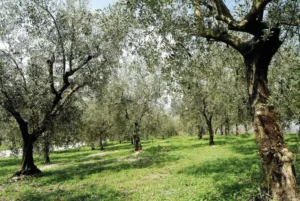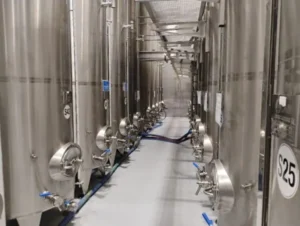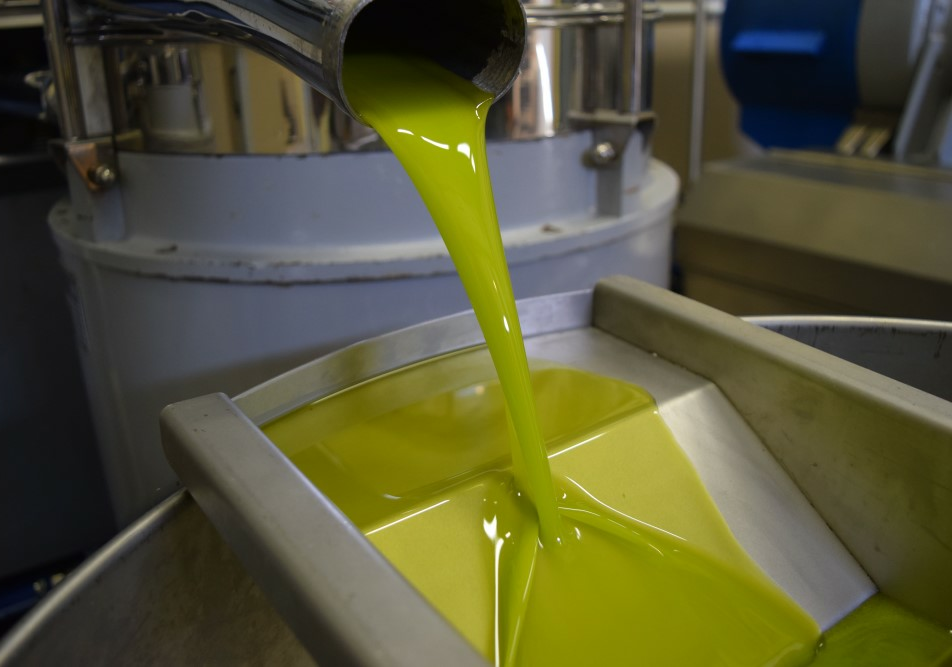Francesca Gambin – Roberta Ruggeri
Aipo Economic Office
Italy is the home of olive oil, an icon of the Mediterranean diet and a symbol of an agriculture that combines tradition, innovation, and cultural identity.
Olive oil isn’t just a food, it’s an economic and social ecosystem, a complex supply chain involving hundreds of thousands of companies, professionals, technicians, institutions, and local communities.
A unique heritage in the world

The transformation of olive oil

A significant part of this production è exporteda value exceeding 1,4 billion euros, confirming the international reputation of Italian oil.
A dynamic and interconnected supply chain

Each bottle is also the product of the creativity of designers, graphic designers, photographers, copywriters, and social media managers, who showcase and promote the authenticity of Italian products around the world. The overall value generated by the olive oil supply chain is distributed across multiple production segments.
The economic map of the supply chain
The GSP (gross marketable production) amounts to about 1,2 billion, while the overall value generated by the olive oil supply chain exceeds 3,3 billion euros per year, divided as follows:
Sector
Estimated Weight %
Value in millions of €
Agricultural production
35-40%
1.155–1.320
Oil mills and processing
15-18%
495–594
Research and technique
3-5%
99–165
Oil mechanics
4-6%
132–198
Logistics and transport
3-4%
99–132
Packaging and bottling
5-6%
165–198
Trade
6-8%
198–264
Nursery
2-3%
66–99
Communication and training
2-3%
66–99
Fertilizers and plant protection products
3-4%
99–132
Import / export
4-5%
132–165
Large-scale retail trade and catering
8-10%
264–330
The protagonist territories
Although olive production is highly concentrated in Southern Italy, processing, packaging and export activities involve the entire national territory. Puglia It represents the first region in terms of olive-growing area and quantity harvested, with over a million tons of olives. Calabria e Sicilia they follow with very high production volumes and an extraordinary richness of native varieties.
The regions of Central Italy as Toscana, Umbria e Lazio They stand out for the quality of their production and the strong presence of artisanal and industrial bottlers.
In the Northern areas, such as Liguria, Lombardia e Veneto, specialize in packaging and export, with historic brands known internationally.
Aggregation and Programming: OP and AOP
On the organizational level, in 2024 there will be 131 Producer Organizations (POs) and 3 PO Associations (AOPs) recognized in the olive sector.
These structures coordinate operational programs co-financed for a total of 34,59 million euros per year, with strategic interventions on innovation, promotion, sustainability and crisis management.
Research and innovation
Numerous scientific and technical research projects also contribute to supporting the development of the supply chain, among the most important of which is the Olive Oil Project conducted by CREA analyzes nutritional quality, labeling, sensory analysis and environmental sustainability.
The ministerial program Olivemap It is instead dedicated to the mapping of olive-growing areas and the analysis of Producer Organizations.
Initiatives, then, such as “Oil in the Chair” They promote olive growing culture in schools, educating new generations on the values and potential of this sector.
Control, certification and protection
In terms of quality, Italian PDO and PGI products are protected by consortia recognized by the Ministry, which operate in synergy with a complex control system: panel tests, chemical analyses, documentary checks, field inspections, customs controls, and, when necessary, intervention by law enforcement and the judiciary. Currently, Italy boasts 46 DOP and 7 IGP designations for extra virgin olive oil, to which are added 5 DOP/IGP dedicated to table olives, For a total of 58 official recognitions at European levelOf these, approximately 30 are represented by formally recognized protection consortia, which also play an active role in promoting and legally defending the denominations.
The certification system is entrusted to accredited control bodies (such as CSQA, Valoritalia, Bioagricert), while the surveillance and repression of fraud involves a network of at least five police forces: theICQRF (Central Inspectorate of the Ministry of Agriculture), the Guardia di Finanza, Carabinieri for Agri-food Protection, the CsForestry Arabs, Customs, in addition to possible interventions by the judicial authorities.
Overall, it is estimated that 500,000 operations are carried out each year. over 15.000 checks in the olive oil sector, demonstrating the strategic importance that this sector holds both economically and in terms of legality and transparency towards consumers.
Table olives
Italy also plays an important role in the market of table olives and preserves in oil, exporting to over 60 countries and generating an inclusive value between 300 and 400 million euros per yearLarge companies such as Citres, Polli, Eurolive, and Ortoconserviera Cameranese lead this sector, which also benefits from the growing demand for gourmet and organic products. Imports of olives for processing come primarily from Greece, Spain, and Tunisia.
The employment impact of the supply chain
From an employment point of view, the supply chain is confirmed to be highly labour-intensive, with a direct impact estimated between 140.000 and 170.000 work units.
The distribution is as follows:
Sector
Estimated work units
Agricultural production
80.000–100.000
Oil mills and processing
15.000–20.000
Table olives and olive oil preserves
10.000–15.000
Logistics and transport
5.000–8.000
Packaging and bottling
8.000–10.000
Trade and large-scale retail trade
12.000–15.000
Communication and training
2.000–3.000
Research and technique
1.000–2.000
Added to these data is an important induced effect, which is estimated to involve additional 21.000–27.000 workers, divided as follows:
Sector
Estimated work units
Mechanics and plant engineering
6.000–8.000
Packaging, glass, ceramics
10.000–12.000
Marketing, design, communication
5.000–7.000
Estimated total induced
21.000–27.000
The overall employment impact of the Italian olive oil supply chain is therefore around between 160.000 and 197.000 people, demonstrating its importance also in terms of social cohesion and territorial protection.
Culture, promotion and future vision
Extra virgin olive oil is also featured at major national and international fairs, competitions, and awards—such as Aipo d’Argento, Sol d’Oro, Ercole Olivario, Flos Olei, Gambero Rosso, Biol, and Oro d’Italia—and occupies a central place in the candidacy of Italian cuisine for UNESCO Intangible Cultural Heritage of Humanity, as a key component of the Mediterranean Diet. Italian olive oil, therefore, is much more than a condiment: it is an economic driver, a cultural symbol, and a territorial asset. Its supply chain reflects an industrious, creative, technologically advanced Italy, attentive to quality and sustainability.
A world to be protected, because it is precisely in its complexity and depth that the true potential of Italian olive oil lies: to be not just a food, but a driving force of the economy, culture, and national identity.


Dining and Cooking